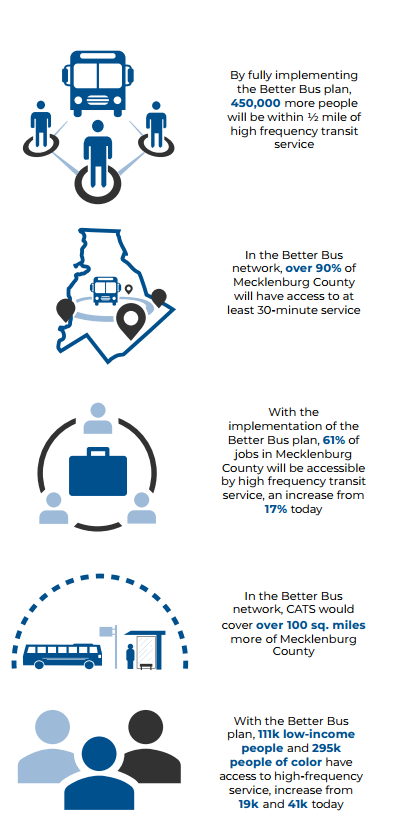Charlotte's Push for a "Better Bus" System
The Better Bus Plan is part of Charlotte’s broader mobility strategy
Charlotte’s population growth has intensified demand for more efficient urban infrastructure. As the city expands and housing developments stretch outward, the need for reliable and accessible transit becomes increasingly urgent. Historically reliant on car travel, Charlotte has struggled to offer a competitive public transportation system. The Charlotte Area Transit System (CATS) aims to change that with its proposed Better Bus Plan.
The Better Bus Plan seeks to overhaul the city’s existing bus network to deliver faster, more frequent, and more reliable service. The proposal includes significant improvements to route frequency, bus stop amenities, and transit accessibility. With public dissatisfaction mounting, the plan arrives at a pivotal moment.
What the Better Bus Plan Proposes
The Better Bus Plan outlines a series of objectives aimed at modernizing Charlotte’s bus system:
Increased Frequency:: Service levels are projected to rise by nearly 50% within five years. Fifteen high-ridership routes would operate every 15 minutes or better to reduce wait times and enhance reliability.
Expanded Coverage:: The restructured network would increase the number of residents living within a 10-minute walk of high-frequency service from roughly 30,000 to more than 250,000.
Modernized Bus Stops:: More than 2,300 new stop amenities—including shelters, benches, trash receptacles, and lighting—are planned to improve rider comfort and safety.
Bus-First Infrastructure:: Traffic signal priority and queue jump lanes are proposed to allow buses to bypass congestion and maintain schedules.
Sustainability:: The plan prioritizes environmentally friendly transit options to reduce CO2 emissions in the Charlotte area and contribute to a healthier urban environment.
Equity:: By offering accessible and affordable transit, the plan aims to serve residents of diverse backgrounds and income levels, reinforcing public transit as a community-wide resource.
See the full report here: Better Bus - Charlotte Area Transit System




Funding
The proposed network overhaul is estimated to cost $522 million over ten years. CATS anticipates funding the initiative primarily through a 1-cent sales tax in Mecklenburg County, which could generate approximately $69 million annually. The tax proposal may appear on ballots later this year.
Public Sentiment and the Road Ahead
According to statements from recent public meetings, CATS officials have framed the plan as a means of connecting residents with greater economic opportunity. Community surveys reflect a cautious optimism; while many support the vision of reliable transit, skepticism remains after years of unmet expectations (CATS Public Input Survey).
Organizations like Sustain Charlotte have endorsed the plan, viewing it as a foundational step toward equitable mobility and environmental sustainability.
The Better Bus Plan offers Charlotte a potential turning point in how the city approaches public transit. Its success will depend on sustained investment, transparent implementation, and community trust. As residents prepare to weigh in this fall, the outcome will signal not just the future of transit, but the city’s broader priorities.
Article written by Daryna Maznytska

